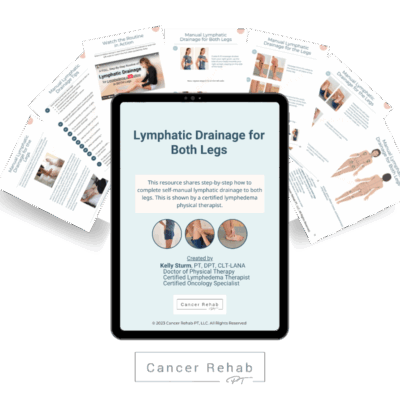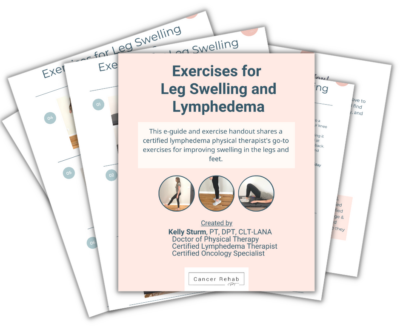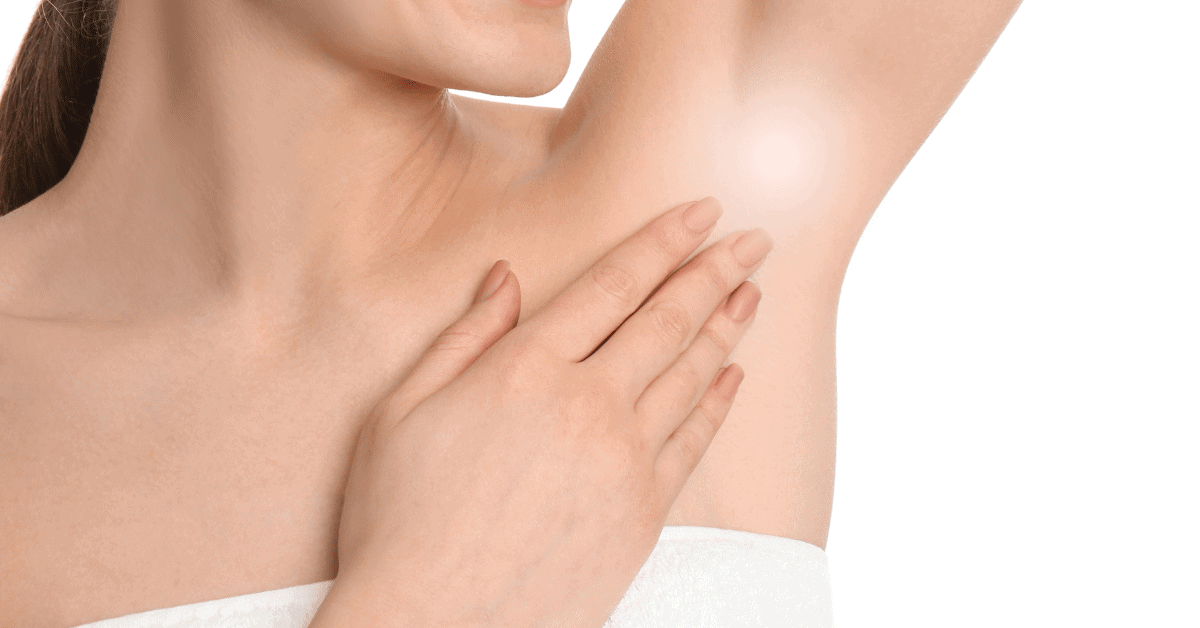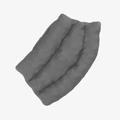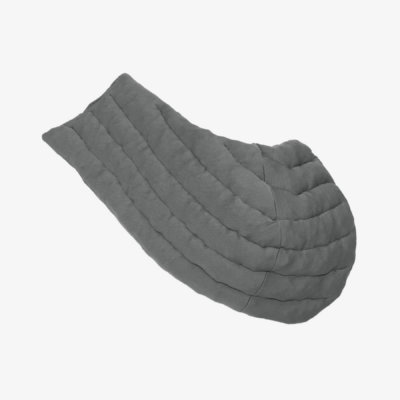Swelling under the armpit can cause a lot of discomfort and concern, especially because it’s such a sensitive area. You may experience heaviness, tightness, or a feeling of fullness under your arm. Sometimes, you may have an armpit lump.
Many different causes could potentially result in swelling or an armpit lump, including viral infections and cysts. Some swelling under the armpit requires medical treatment or could signal a more serious issue.
This article is going to mostly focus on swelling as a result of surgery and a chronic condition called lymphedema. This type of swelling can often be successfully managed with lymphatic drainage, compression, and movement.
Here’s everything you need to know.
What Is Swelling Under Armpit?
Armpit swelling happens when fluid accumulates in the soft tissues of the axilla (armpit) region. This area has important structures like lymph nodes, blood vessels, and fatty tissue.
Sometimes, these structures can be affected, leading to fluid buildup. The swelling might feel tender and heavy or create a sensation of fullness under your arm. It may become difficult to move your arm or you can feel uncomfortable wearing certain clothing.
Many different underlying causes can trigger swelling – I’ll discuss them later in the article.
Swelling Under One Armpit
When swelling appears under only one armpit, this often relates to surgical procedures on that side of the body, such as breast cancer surgery or lymph node removal. The swelling can develop immediately after surgery or gradually over time.
Learn more about breast cancer rehabilitation.
Swelling Under Armpit, No Lump
Sometimes armpit swelling presents as a general fullness or puffiness without a distinct lump. This often happens when you have lymphedema, a chronic condition where the lymphatic system struggles to drain fluid properly.
The affected area may feel soft and doughy to the touch, and the skin might appear stretched or shiny. Lymphedema swelling doesn’t feel like an inflamed lump – it’s more like a uniform fullness across the entire armpit region.
Learn more about lymphedema after breast cancer.
Causes of Swelling Under Armpit
This article focuses mostly on swelling related to surgery recovery and lymphedema, but it’s important to understand that armpit swelling can develop for many different reasons1. Here are some common causes.
- Viral Infections: Serious infections like measles, rubella, and HIV (human immunodeficiency virus) can cause swollen lymph nodes. Even the flu can also result in swollen glands sometimes. This type of swelling typically resolves as your body recovers from the virus.
- Infectious Mononucleosis: Often called “mono,” this viral infection frequently causes swollen lymph nodes throughout the body, including the armpit area. The swelling usually improves as the infection clears.
- Cellulitis: This bacterial skin infection can cause redness, warmth, and swelling in the affected area. When it occurs near the armpit, the entire region can become swollen and tender.
- Lyme Disease: This tick-borne illness can cause swollen lymph glands in different parts of the body, including the armpit. You’ll likely have other symptoms along with the swelling, too.
- Irritation from Shaving: Sometimes, simple irritation from shaving can cause temporary swelling and discomfort in the armpit area. This swelling usually goes down in a few days and often happens with teens.
- Cysts: Small, fluid-filled sacs can develop in the armpit area, causing swelling. These are usually benign but may need medical evaluation or to be tested for cancer cells.
- Cancer Surgery: Surgical procedures, especially those related to breast cancer treatment, can cause swelling in the armpit area. This swelling is usually temporary during the recovery, but sometimes it can turn long-term.
- Lymphedema: This chronic condition prevents lymph fluid from draining properly and can cause swelling in different parts of the body, such as arms, legs, and even armpits. It often develops as a result of lymph node removal or damage during cancer treatment. Scientists estimate2 that up to 250,000 million people worldwide have lymphedema.
Sometimes, swelling under the armpit will resolve on its own with time and rest (for example, if it developed because of the flu or skin irritation from shaving). At the same time, it can sometimes require medical treatment, such as antibiotics, or further evaluation.
If you notice new or concerning swelling in your armpit, especially if you also have pain, redness, or other symptoms, contact your healthcare provider for a proper evaluation.
If you’re experiencing swelling under the armpit after surgery or as a lymphedema symptom, there are a few things you can do at home to reduce discomfort and manage swelling. I’ll explain them later in the article.
Swelling Under Armpit After Mastectomy
Swelling in the armpit after a mastectomy is pretty common.
During this surgery, your surgical team often removes lymph nodes from the armpit area (called axillary lymph node dissection) to check if the cancer has spread. This procedure impacts your lymphatic system’s natural drainage pathways.
You may notice swelling shortly after surgery or sometimes even months later.
It might extend from your armpit down your arm or into your chest wall. Sometimes this swelling is temporary, but it can also turn into lymphedema.
Here are a few tips on how to prevent lymphedema.
Swelling Under Armpit After Breast Augmentation
This type of swelling typically occurs because of the surgical procedure itself and the placement of the implant.
During breast augmentation, your surgeon creates a pocket for the implant, which may extend into the armpit area. This can cause temporary swelling and fluid accumulation. You might notice:
- Fullness extending into your armpit area
- Mild discomfort when raising your arm
- Changes in sensation around your armpit
- Temporary tightness in the chest and armpit region
This type of post-surgical swelling usually peaks within the first few days after surgery and gradually improves over several weeks.
Swelling Under Armpit Treatment
The following recommendations are specifically for general swelling after surgery and lymphedema. If your swelling is caused by infections, cysts, or other medical conditions, please consult with your healthcare provider for appropriate treatment.
Here’s what I recommend as an Oncology Physical Therapist & a Certified Lymphedema Therapist (CLT-LANA) to reduce swelling under the armpit. You can also follow the video below.
Lymphatic Drainage
Lymphatic drainage massage is a special massage technique that helps move excess fluid out of swollen areas. You can see a medical professional or learn how to do it at home.
The key word here is gentle – the armpit is a sensitive area with many important structures beneath the skin. You never want to apply deep pressure or aggressive massage techniques.
So, use very light and gentle strokes. You can message your armpit a few times throughout the day or as needed. I teach lymphatic drainage massage techniques in Breast Cancer Rehab.
Compression
Compression therapy is one of the best ways to manage lymphedema and post-surgical swelling. It works by providing gentle external pressure with a special compression garment.
There are many compression sleeves and stockings to choose from, but finding the right compression for the armpit area is more difficult. There are very few products that target that specific area.
However, I do often recommend compression bras, compression t-shirts, and swell spots for armpit swelling. Here are my favorite options.
Compression Bras
Compression T-Shirts
Use code CANCERREHABPT for 10% off!
- Wear Ease Katy T-Shirt with Axilla Pocket
- Axilla Pad to Fit Katy T
- Men’s WearEase Andrew Compression T-Shirt
- Non-Pocketed Compression T-Shirt
Swell Spots
These are affiliate links, but I only recommend products that I know and trust.
Keep in mind that the compression should always feel supportive, not uncomfortable or restrictive.
If your compression garment causes discomfort or makes swelling worse, stop using it and reach out to your medical team for alternatives.
If you have swelling under the armpit, you should avoid underwire bras – they can restrict natural fluid movement and make the swelling worse.
Movement
Movement can be incredibly helpful with any type of swelling, including swelling under the armpit.
However, it can be hard to figure out what type of movement to do because the armpit is not the easiest area to reach with exercise.
I recommend gentle arm exercises, such as small circles (both forward and backward), arm swings, shoulder rolls, and reaching movements.
Light housework like folding laundry, gardening, and cooking can also be helpful.
Generally speaking, any movement that keeps your arm and shoulder mobile without strain can help reduce swelling under the armpit. Just start slowly (especially if you’re recovering after surgery), gradually increase your activity level, and stop if you experience pain or discomfort.
FAQs
What Does Lymphedema in the Armpit Feel Like?
Lymphedema in the armpit often feels like a general heaviness or fullness in the area, and you might also notice that your skin feels tight or stretched. Unlike conditions where your immune system is fighting infection and causing painful lumps, lymphedema usually isn’t painful – but you may experience some discomfort. The swelling can also extend beyond just the armpit area. Lymphedema is a chronic condition, so while you can manage the swelling to make it better, it likely won’t resolve completely.
When Should I Go to the Doctor For a Swollen Armpit?
If you have a swollen armpit as well as fever, sore throat, or a lot of pain, you should see a doctor – these symptoms could indicate that your white blood cells are fighting an infection. Swelling that’s getting worse fast, redness or warmth in the area, pus or unusual discharge, or swelling that doesn’t improve after several weeks also requires medical attention. If you have a history of cancer or unexplained weight loss along with the swelling, this could be a sign of lymphoma (a type of cancer).
Generally speaking, if something feels off, it’s always better to consult with a medical professional you trust. At the same time, post-surgery swelling or swelling that develops as a result of lymphedema can often be managed at home with lymphatic drainage massage, compression therapy, and movement.
Should I Massage Swollen Armpit Glands?
It depends on the cause of the swelling and your technique. If your lymph nodes are swollen because of an infection, you should see a doctor instead of attempting to do self-massage. However, if you’re dealing with post-surgical swelling or lymphedema, gentle lymphatic drainage techniques (not deep massage) can be helpful when you do it correctly.
For post-surgical healing and arm lymphedema, you can learn more about lymphatic drainage massage in Breast Cancer Rehab.
Why Is My Armpit Swollen But No Lump?
General swelling without a distinct lump is common with lymphedema and can also develop after surgery or radiation therapy. In this case, you typically won’t experience tender, localized swelling that happens when your immune system is fighting an infection – it’ll be more like uniform puffiness or fullness across the armpit.
Get Support with Armpit Swelling & Arm Lymphedema
Armpit swelling can develop for many different reasons, including infections, surgery, and a chronic condition called lymphedema. If you don’t know the cause of the swelling under your armpit, it’s important to consult with a medical professional.
Some causes require medical treatment, but you can manage many cases of post-surgical swelling and lymphedema with gentle lymphatic drainage, compression therapy, and movement.
You can find more support with post-surgical armpit swelling and lymphedema in Breast Cancer Rehab as well as my exercise guides!




